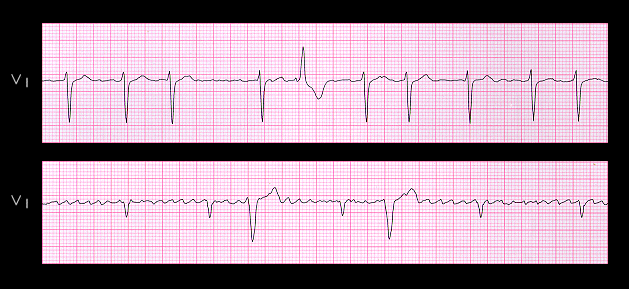
Two examples of atrial fibrillation with wide complex beats that are most likely due to aberrant conduction are shown here. In the upper strip, the wide complex beat has characteristics of right bundle branch block with a QRS duration of 0.12 seconds. Its coupling interval is short (0.40 seconds) while the preceding RR interval is long (1.0 seconds). In the lower strip, the two wide complex beats have characteristics of left bundle branch block with QRS durations of 0.12 seconds. Both have short coupling intervals (0.48 and 0.50 seconds) and long preceding RR intervals (0.98 and 1.08 seconds).
